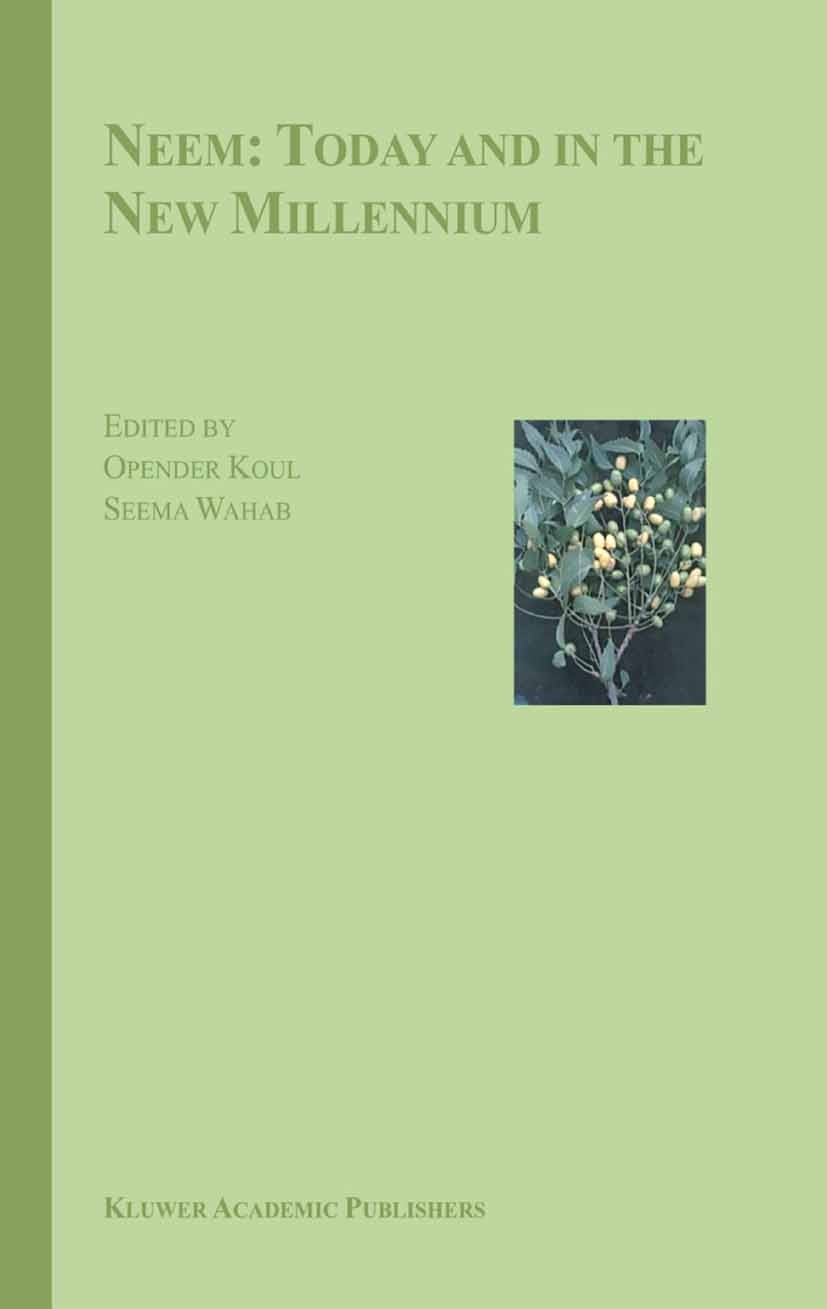| 书目名称 | Neem: Today and in the New Millennium | | 编辑 | Opender Koul,Seema Wahab | | 视频video | http://file.papertrans.cn/663/662364/662364.mp4 | | 图书封面 |  | | 描述 | The chemicals from plant sources, generally termed as phytochemicals, play an important role in acceptance or rejection of the plant by the pests as they could be distasteful or toxic on one hand or on the other hand specialist herbivores have the capability to feed on many such chemicals, as they are able to process these natural products in a manner that is beneficial to them. In the wake of increasing environmental degradation due to burgeoning synthetic chemicals, there has been a process going on to rediscover the usefulness of plants and herbs and a continued effort for more than 2 decades has been to study the green products for cures for several ailments and pest management. In fact, according to Indian Medicinal Plants: A Sectoral Study, the global trade for medicinal plants amounts to about US $ 60 billion and the world demand continues to grow at the rate of 7 per cent per annum. Although many such plants are known in literature, neem has been one of trees with mani-fold virtues. Indian neem tree, Azadirachta indica A. Juss, which is a large evergreen tree, is an outstanding example among plants that has been subject matter of numerous scientific studies concerning its u | | 出版日期 | Book 2004 | | 关键词 | Neem; crop pests; entomopathogens; environmental implications; environmentally-friendly pesticide; global | | 版次 | 1 | | doi | https://doi.org/10.1007/1-4020-2596-3 | | isbn_softcover | 978-90-481-6269-7 | | isbn_ebook | 978-1-4020-2596-9 | | copyright | Springer Science+Business Media Dordrecht 2004 |
The information of publication is updating

|
|
 |Archiver|手机版|小黑屋|
派博传思国际
( 京公网安备110108008328)
GMT+8, 2025-11-13 00:11
|Archiver|手机版|小黑屋|
派博传思国际
( 京公网安备110108008328)
GMT+8, 2025-11-13 00:11


